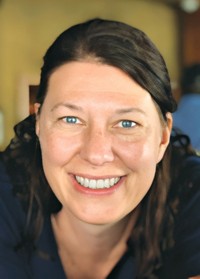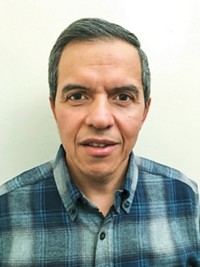Advertisement
Grab your lab coat. Let's get started
Welcome!
Welcome!
Create an account below to get 6 C&EN articles per month, receive newsletters and more - all free.
It seems this is your first time logging in online. Please enter the following information to continue.
As an ACS member you automatically get access to this site. All we need is few more details to create your reading experience.
Not you? Sign in with a different account.
Not you? Sign in with a different account.
ERROR 1
ERROR 1
ERROR 2
ERROR 2
ERROR 2
ERROR 2
ERROR 2
Password and Confirm password must match.
If you have an ACS member number, please enter it here so we can link this account to your membership. (optional)
ERROR 2
ACS values your privacy. By submitting your information, you are gaining access to C&EN and subscribing to our weekly newsletter. We use the information you provide to make your reading experience better, and we will never sell your data to third party members.
Careers
Professional Training
Committee will implement new guidelines in 2008 to evaluate ACS-approved baccalaureate programs
by Rachel Petkewich
June 25, 2007
| A version of this story appeared in
Volume 85, Issue 26

Chemistry majors who accepted their undergraduate degrees at ceremonies this spring did not complete the same American Chemical Society-approved programs that their parents did.
Committee On Professional Training At A Glance
Chair
William Polik, Hope College
Committee Website
Membership
16 full members, one nonvoting staff secretary, four consultants, one ACS staff liaison
Classification
Joint Board-Council Committee
Inception
Established by the ACS Board of Directors in 1936
The discipline of chemistry itself is changing. The student body is becoming more ethnically diverse, and educators are figuring out more about how students learn. To keep pace, requirements for ACS-approved programs are also changing.
The ACS Committee on Professional Training (CPT) monitors developments in chemical education as part of its mission to promote excellence in undergraduate and graduate programs. CPT splits its time between gathering and publishing information and developing and administering guidelines that define high-quality undergraduate chemistry programs.
Receiving ACS approval can require a significant commitment of time and resources for a chemistry department, but CPT believes the ACS imprimatur benefits all parties involved. "The fact that 642 undergraduate program departments across the U.S. and Puerto Rico meet these guidelines of excellence has done a tremendous service for the profession in educating future chemists," says William Polik, CPT chair and a chemistry professor at Hope College, in Holland, Mich. It also pays off significantly for the department and the institution, he adds.
During the past three years, CPT has been revising its approval guidelines for undergraduate programs. Departments applying for initial approval in 2008 will be evaluated under the new guidelines.
The goals for the revision are to offer departments more flexibility to incorporate innovative curricula that reflect modern developments in chemistry, Polik says. The guidelines will focus more on student skills such as communication and teamwork while still retaining requirements for faculty and infrastructure that support excellence, he adds.
CPT members have diverse backgrounds and commit significant amounts of time to committee work. "Members are selected to maintain balanced representation of the subdisciplines of chemistry; representation of liberal arts colleges, research universities, and chemical industry; and if possible, a broad geographic distribution," Polik says. "The majority of chemistry graduates will go on and work in industry, so it's important that we have industrial representation."
Unlike other ACS committees, CPT has no associate members, and rather than having standing subcommittees, ad hoc committees are formed to address specific projects as they arise. Each year, CPT holds three-day meetings at both ACS national meetings and a third meeting in early January. The sessions include time for the full committee to evaluate reports from departments that have already been extensively reviewed by individual members. The initial school-approval process also includes committee members meeting in person with department representatives at an ACS national meeting.
If ACS members want to get involved in CPT, Polik recommends volunteering to do a site visit, which is required for schools seeking initial approval.
CPT does not plan to have an approval program for the country's diverse graduate degrees. That's because U.S. graduate chemistry programs are considered the strongest in the world, and part of that strength lies in their diversity, Polik says.
Instead, CPT interacts with graduate programs by gathering and distributing information through surveys and related publications. Two examples are the free online ACS Directory of Graduate Research and the annual report on quantifying chemistry and chemical engineering graduates published in C&EN, he says. Past surveys have examined trends in library use by chemistry students. An upcoming survey will target which skills employers need. CPT develops the surveys and analyzes the results. Four staff members in the ACS Office of Professional Training distribute, collect, and tabulate survey data.
The committee also collects information about minority-serving institutions. It held a workshop on historically black colleges and universities in 2004 and plans to meet with representatives of Hispanic-serving institutions and Native American tribal colleges later this year.
CPT publishes other resources on its website, including guidance for undergraduates planning for graduate school or work in industry and a twice-yearly newsletter for chemistry faculty about trends in chemical education and current CPT activities.





Join the conversation
Contact the reporter
Submit a Letter to the Editor for publication
Engage with us on Twitter